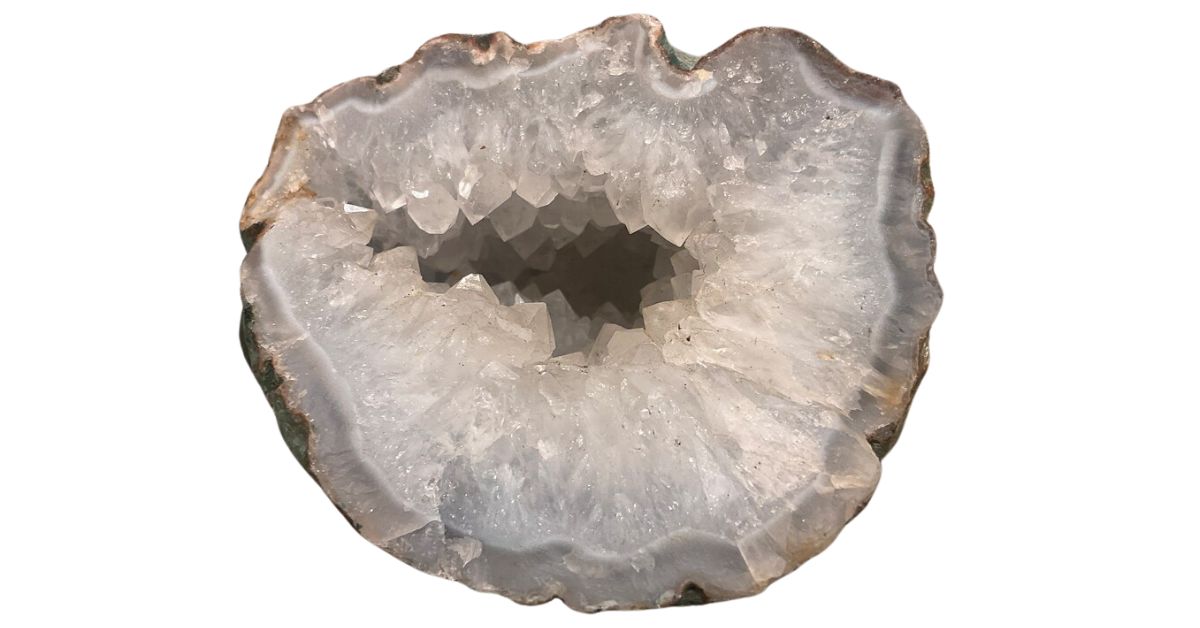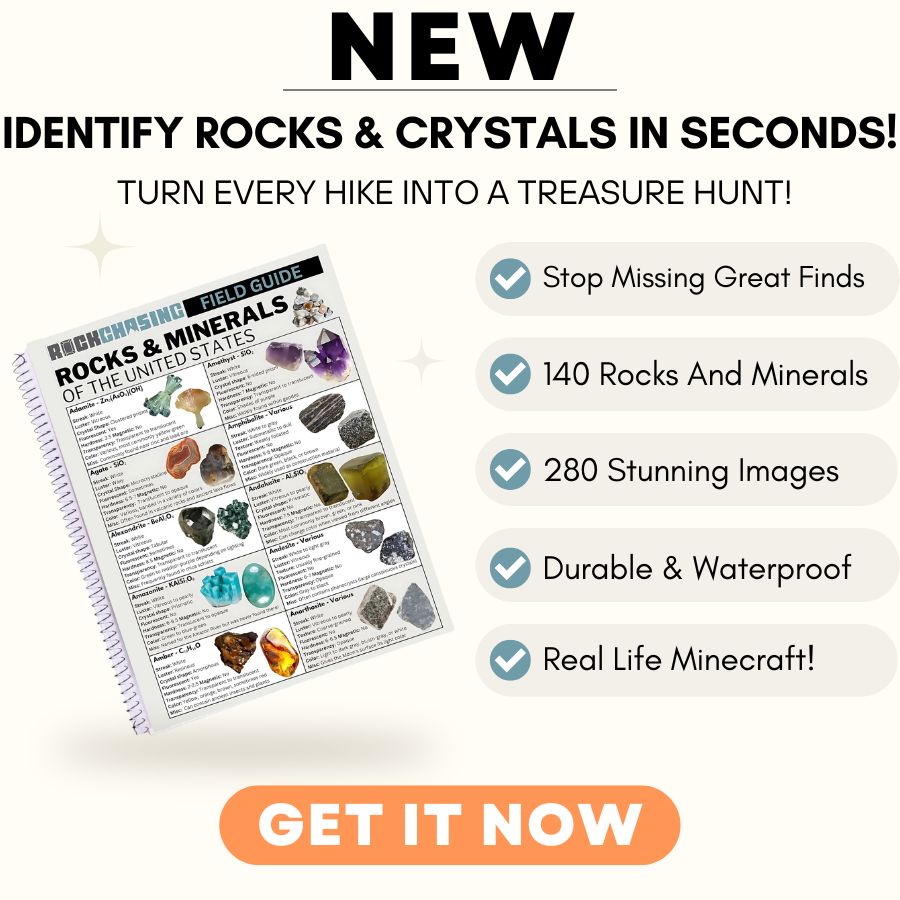Exploring the great outdoors in search of quartz can be an exhilarating adventure, and Kentucky is a fantastic place to start. We know how to find quartz, and we’re eager to share our knowledge with you.
Kentucky Lake, Livingston County, and Berea are some of the best spots in Kentucky to hunt for quartz. Each of these areas offers a unique setting where quartz crystals are waiting to be discovered.
Finding quartz might seem challenging at first, but with the right tips and a bit of guidance, success is within reach. We’ll share lots of great advice on how to identify potential quartz sites and the best ways to search.
What Is Kentucky Quartz Anyway?
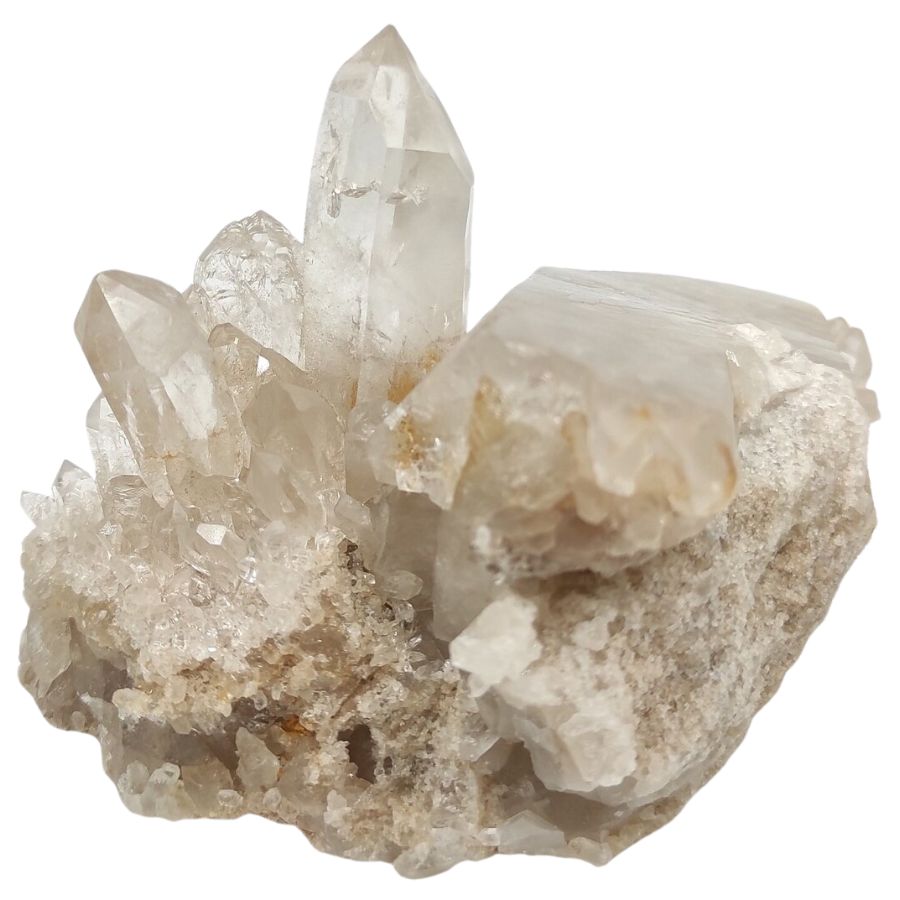
Quartz is a common mineral that we often find on our rock-hunting adventures. Identifying quartz is exciting because it comes in clear or milky white colors, and sometimes we even find it in shades of pink, red, or purple due to impurities.
We usually discover quartz in places like riverbeds, beaches, and deep in the earth’s crust. It’s often nestled in cracks and crevices, making our search a fun and rewarding challenge.
One of the coolest things about quartz is how it forms into beautiful crystals. These crystals can be large or small, and sometimes they cluster together, making for an impressive sight when we uncover them.
When it comes to what quartz is worth, its price can vary widely. Smaller, common quartz pieces might not be very expensive, but larger, well-formed crystals can be quite valuable, especially if they’re rare or unique in color and shape.
The Types Of Quartz Found In Kentucky
Kentucky is a wonderful place for finding different types of quartz. Here are the types you can expect to find:
- Smoky Quartz
- Agate
- Amethyst
- Chalcedony
For those interested in learning more about crystals in Kentucky, we have a comprehensive guide that covers everything from identifying to finding them.
- The deep experience and understanding of our team about the area
- Recommendations from local groups and clubs
- How easy it is to get the a particular location
- Safety and potential hazards when collecting
- Weighing private and public locations
- The ability for both experienced and novice geode enthusiasts to find great samples
With these factors in mind we’ve been able to put together a fantastic list that just about anyone can use!
The Best Places To Find Quartz in Kentucky
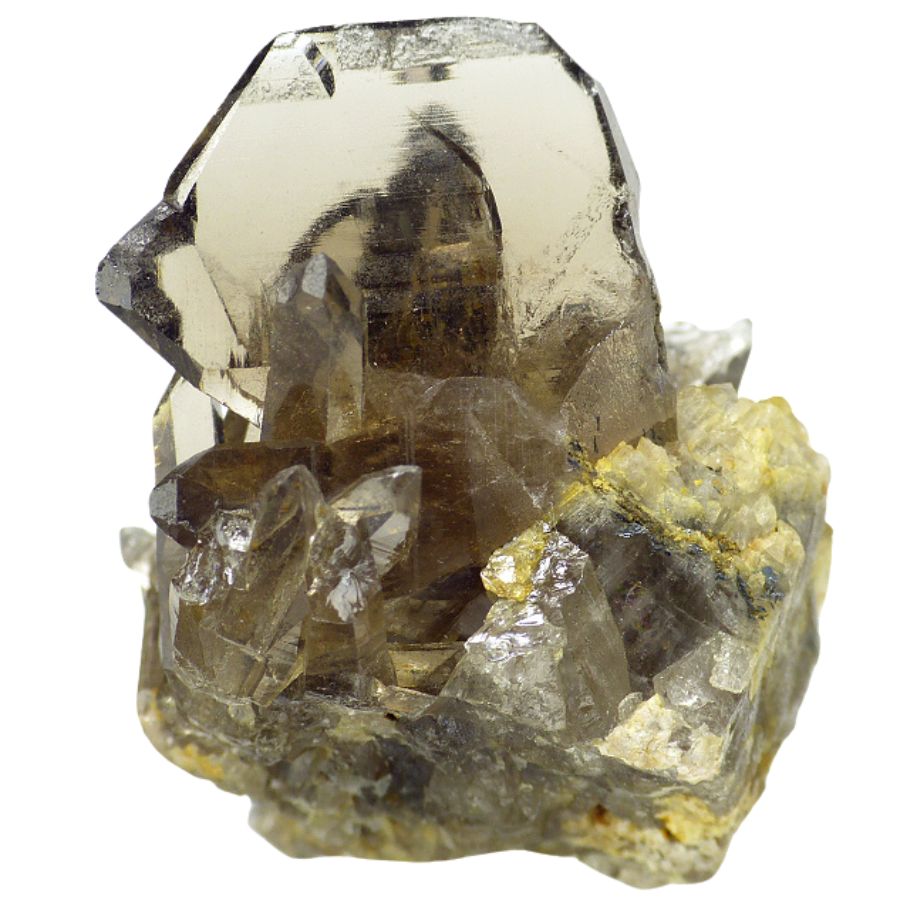
Finding quartz during our geological explorations can be a tough task, but it’s always a thrilling experience. Our collective experiences have taught us the importance of patience and knowledge of the right places to look.
If you’re eager to learn more about how to mine gems in Kentucky, our detailed guide is an invaluable resource. It offers insights and tips on the best practices for gem mining, ensuring a fruitful and enjoyable adventure.
Always Confirm Access and Collection Rules!
Before heading out to any of the locations on our list you need to confirm access requirements and collection rules for both public and private locations directly with the location. We haven’t personally verified every location and the access requirements and collection rules often change without notice.
Many of the locations we mention will not allow collecting but are still great places for those who love to find beautiful rocks and minerals in the wild without keeping them. We also can’t guarantee you will find anything in these locations since they are constantly changing.
Always get updated information directly from the source ahead of time to ensure responsible rockhounding. If you want even more current options it’s always a good idea to contact local rock and mineral clubs and groups
Livingston County
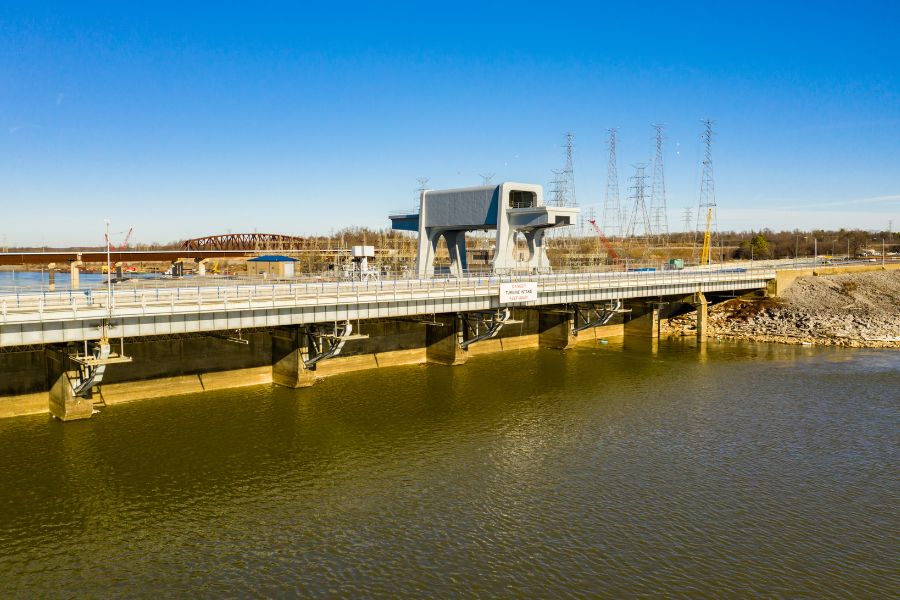
Livingston County is known for its diverse geography, featuring rolling hills and lush valleys. We often explore its varied terrain, which includes parts of the Cumberland Plateau and the Ohio River Valley.
The county’s geology is fascinating, characterized by sedimentary rocks like limestone and sandstone. These rock formations, along with the presence of numerous creeks and rivers, create ideal conditions for rockhounding.
In our numerous trips here, we’ve discovered that the soil composition and erosion patterns contribute to the uncovering of interesting mineral specimens.
Before heading out to collect rocks in this area, it’s important to check with the Kentucky Department for Natural Resources. They can provide the necessary guidelines and rules for rock collecting.
Where we found quartz in Livingston County
We’ve found that quartz can be located in mining districts, offering a variety of specimens. The areas around Pinckneyville, Carrsville, and Birdsville are also great places to look.
DON'T MISS OUT ON ANY GREAT FINDS!
While you're out searching for Crystals you're going to find A LOT of other interesting rocks and minerals along the way. The last thing you want to do is toss out something really interesting or valuable. It can be easy to misidentify things without a little guidance.
We've put together a fantastic field guide that makes identifying 140 of the most interesting and valuable rocks and minerals you will find REALLY EASY. It's simple to use, really durable, and will allow you to identify just about any rock and mineral you come across. Make sure you bring it along on your hunt!
Barren River Lake
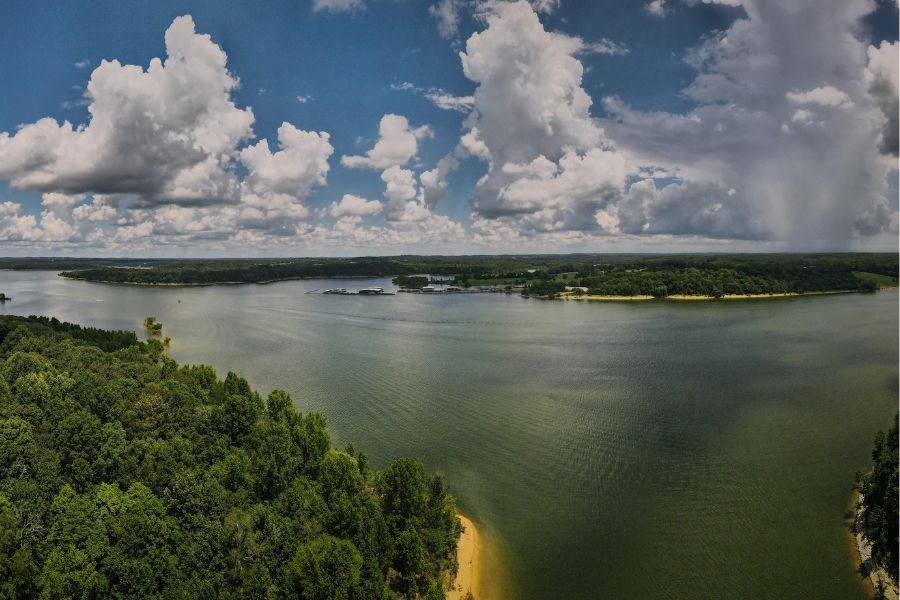
Barren River Lake is nestled in a region with a diverse geography, featuring rolling hills and a mix of forested areas. We enjoy exploring around the lake, where the terrain changes from gentle slopes to more rugged, hilly landscapes.
The terrain around the lake is varied, with areas of exposed rock and cliffs that provide insights into the region’s geological history. These rocky outcrops are especially interesting because they often contain a variety of minerals.
Geologically, the area around Barren River Lake is rich in sedimentary rocks, such as limestone and sandstone.
Where we found quartz in Barren River Lake
Quartz can often be found along the shorelines of the lake. These areas tend to reveal a variety of quartz pieces, especially after rainfall or shifting waters.
Elizabethtown
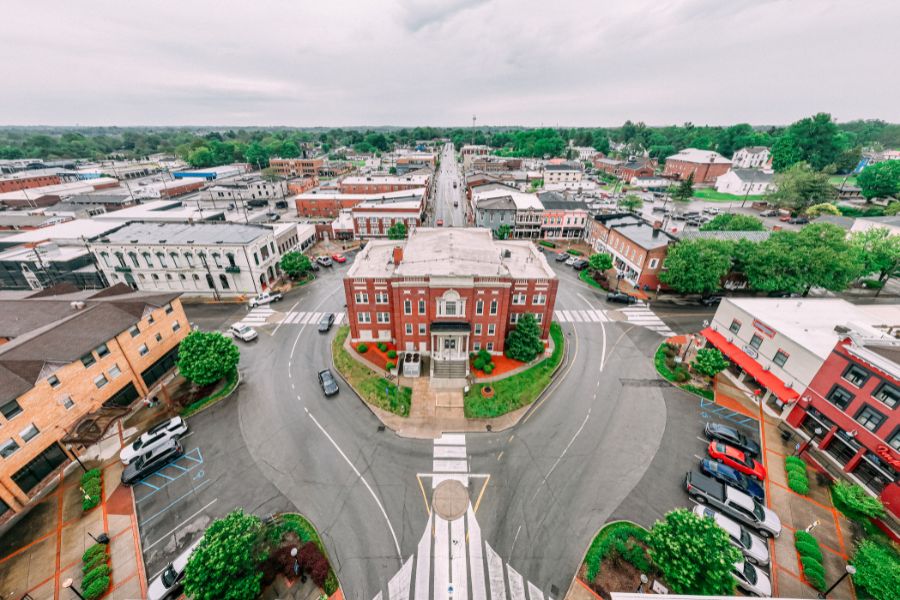
Elizabethtown is situated in a region that blends both flat plains and gently rolling hills, creating a varied landscape. This terrain mix provides a unique setting for geological exploration and discovery.
The area is known for its sedimentary rock formations, primarily consisting of limestone and dolomite. These rocks are visible in various parts of the landscape, especially in areas with exposed outcrops.
Geologically, Elizabethtown is characterized by the presence of these sedimentary rocks, which dominate the local landscape. The visible layers in these formations provide insights into the different types of sedimentary processes at work.
Where we found quartz in Elizabethtown
We’ve found quartz within the quarries scattered throughout the area. These quarries are a rich source of geodes, which sometimes house beautiful Kentucky quartz inside.
Berea
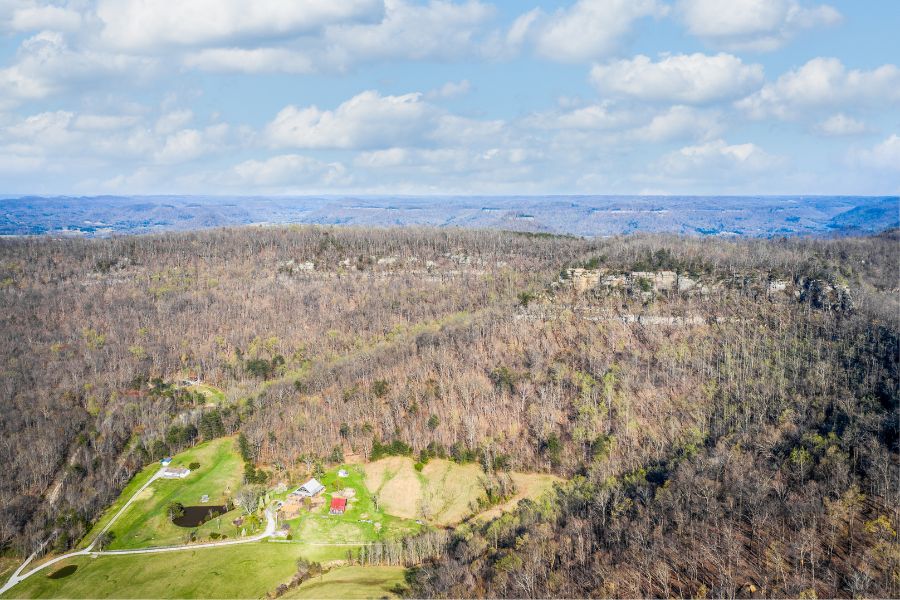
Berea is characterized by its varied terrain, featuring rolling hills and flat plains which create a diverse landscape. This area is particularly interesting due to the way these different landforms interact, offering unique geological insights.
The geology of Berea is predominantly sedimentary, with noticeable layers of limestone and sandstone forming the backbone of the landscape. These rock formations were shaped by natural forces over millions of years.
From rocky outcrops to exposed cliff faces, the geological features in Berea provide an excellent opportunity for geological study and exploration.
Where we found quartz in Berea
You’ll often come across quartz geodes in this area, which are rocky spheres that contain crystals inside. These geodes are usually found in areas where volcanic and sedimentary rocks are present.
Kentucky Lake
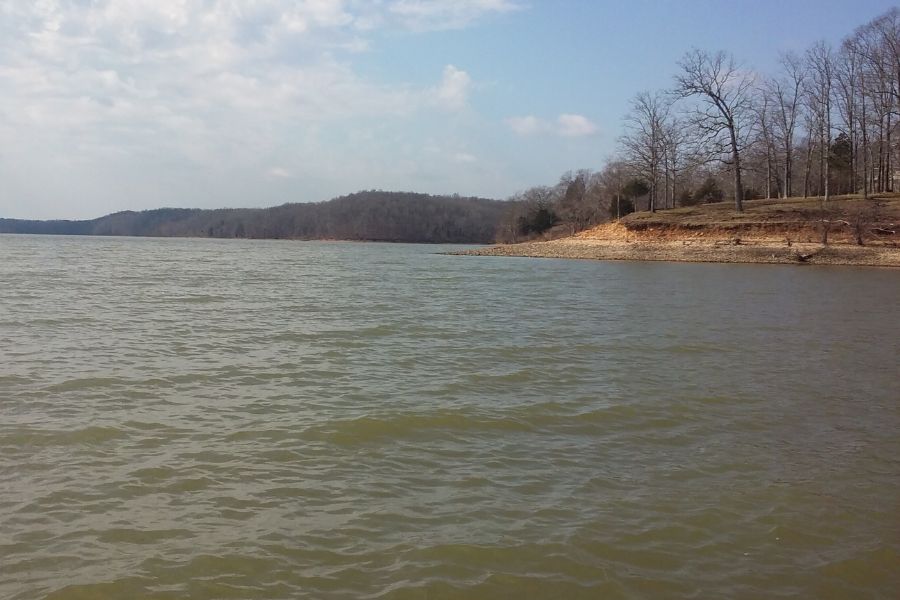
Kentucky Lake, characterized by its large body of water, is surrounded by a mix of dense forests and open land. The lake’s vast surface area plays a significant role in shaping the local geography, offering a diverse range of ecosystems.
The terrain around the lake is varied, with some areas featuring steep, rocky cliffs while others have gentle, sloping banks. This variation provides a rich environment for observing different geological formations and processes.
Geologically, the area around Kentucky Lake is noted for its sedimentary rock formations, including limestone and sandstone. These rock types are often visible along the lake’s shoreline and cliffs.
Where we found quartz in Kentucky Lake
We’ve found quartz along the shorelines where the water has eroded the rocks. These areas are especially good for uncovering quartz after storms or heavy rains.
Other Great Places To Find Kentucky Quartz
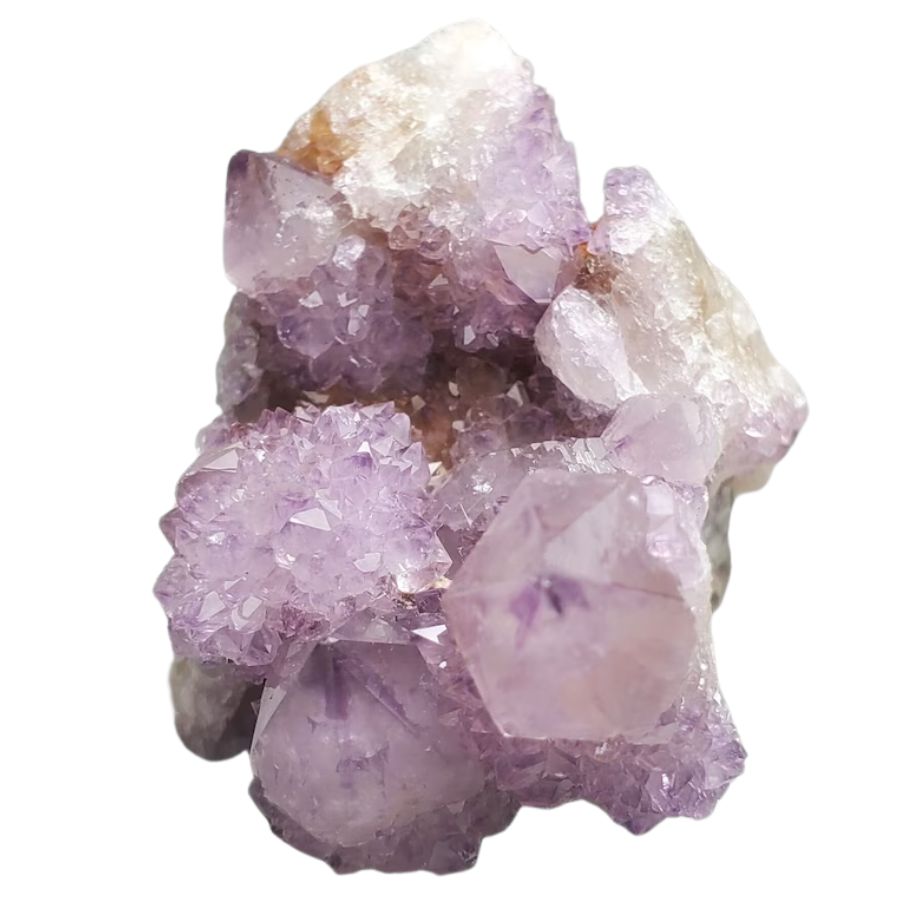
In our rockhounding adventures across the state, we’ve come across various places where quartz can be found. These are our other recommendations:
Our recommendations by county
| County | Location |
| Adair County | Gaddie-Shamrock Columbia quarry |
| Allen County | Scottsville |
| Anderson County | Kentucky River |
| Bath County | Owingsville |
| Bell County | VM+M Mining quarry |
| Boyle County | Carpenter Creek |
| Boyle County | Danville |
| Breckinridge County | Mystic Quarry |
| Bullitt County | KY 1526 road cuts |
| Carter County | Little Sandy River |
| Crittenden County | Frances |
| Crittenden County | Marion |
| Crittenden County | Moore Hill |
| Crittenden County | Mary Belle Mine |
| Cumberland County | Kentucky 61 road cuts |
| Edmonson County | Park City Quarry |
| Elliott County | Elliott County kimberlite |
| Estill County | Renfro and Borden formations |
| Floyd County | Truman Shepherd coal mine |
| Graves County | Jackson Purchase |
| Green County | Nally and Gibson Greensburg Quarry |
| Greenup County | Greenup Mine |
| Greenup County | Paul Coffey quarry |
| Hardin County | KY 313 road cuts |
| Hardin County | Radcliff |
| Hardin County | Vine Grove |
| Hart County | Horse Cave |
| Jackson County | Station Camp Creek |
| Letcher County | Nally and Hayden Quarry |
| Lincoln County | Crab Orchard |
| Lincoln County | Green River |
| Lincoln County | Halls Gap |
| Lincoln County | Kings Mountain |
| Logan County | Hanson Aggregates Midwest Russelville Quarry |
| Madison County | Big Hill |
| Meade County | Muldraugh |
| Metcalfe County | Edmonton |
| Monroe County | Central Tennessee Mining District |
| Nelson County | Bardstown |
| Oldham County | Brownsboro |
| Owen County | Gratz Mine |
| Pike County | Elkhorn Quarry |
| Powell County | Renfro and Borden formations |
| Pulaski County | Cumberland Parkway roadcut |
| Rockcastle County | Grassy Creek |
| Rowan County | Rose River Iron Mines |
| Russell County | Manntown Road |
| Taylor County | Badger Mine |
| Trigg County | Canton Quarry |
| Washington County | Springfield |
| Wayne County | Monticello |
Common Quartz-Hunting Questions
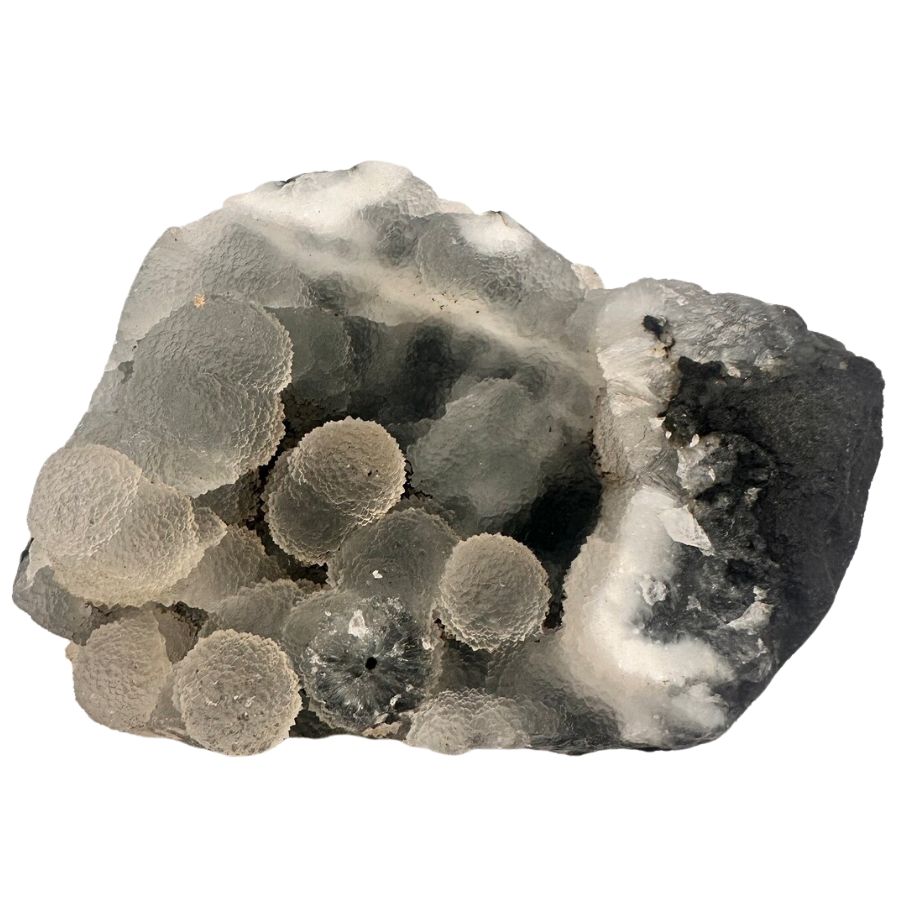
We often hear a lot of questions about finding and identifying quartz in Kentucky from fellow rock enthusiasts. Here, we’ll be answering important questions about quartz hunting in the state.
Is it illegal to collect quartz in Kentucky?
Collecting quartz in Kentucky is generally legal, but there are important rules and regulations to follow. It’s essential to know the ownership of the land where you plan to collect, as different rules apply to private, state, and federal lands.
On private property, you must have the landowner’s permission to mine for quartz. Without this permission, taking any rocks or minerals, including quartz, is considered trespassing and theft.
On state and federal lands, the rules can be more complex. Often, collecting small amounts of rocks and minerals for personal use is allowed, but commercial collecting is typically prohibited.
It’s a good idea to check with the Kentucky Department for Natural Resources or the specific agency managing the land to understand where to mine for quartz.
The Best Places To Buy Quartz In Kentucky
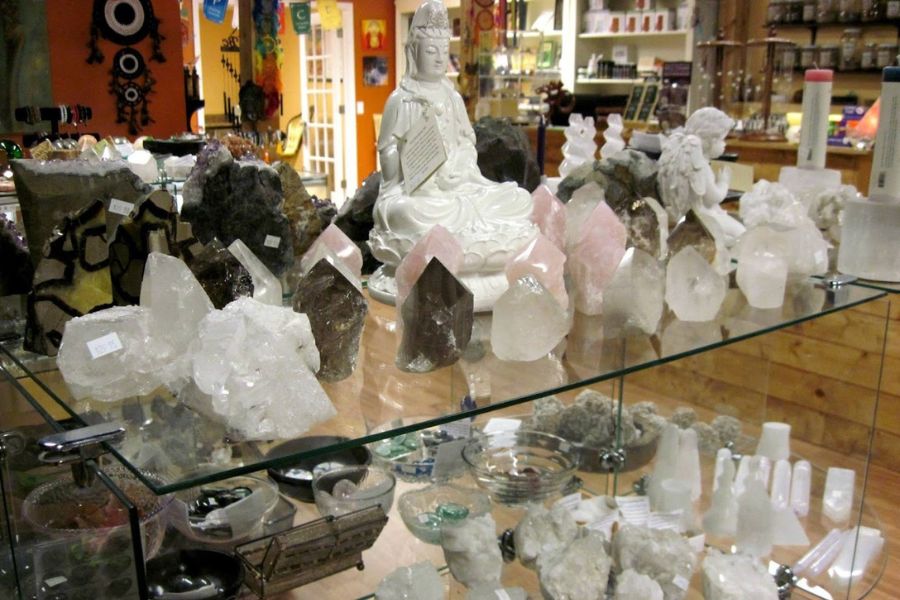
In our travels, we’ve visited many shops that sell quartz in various forms. Here’s a list of some of the best shops we’ve come across for buying quartz, perfect for collectors at any level.
- Big Mike’s Rock Shop – 566 Old Mammoth Cave Rd, Cave City, KY 42127
- Onyx Cave and Rock Shop – 93 Huckleberry Knob Rd, Cave City, KY 42127
- Green Earth Stones Metaphysical Center – 1701 U.S. 31 W Bypass, Bowling Green, KY 42101
- Nice Rock Shop – 311 Broadway St, Paducah, KY 42001
- Pyrite Illusions – 97 Settlers Center Rd, Taylorsville, KY 40071

